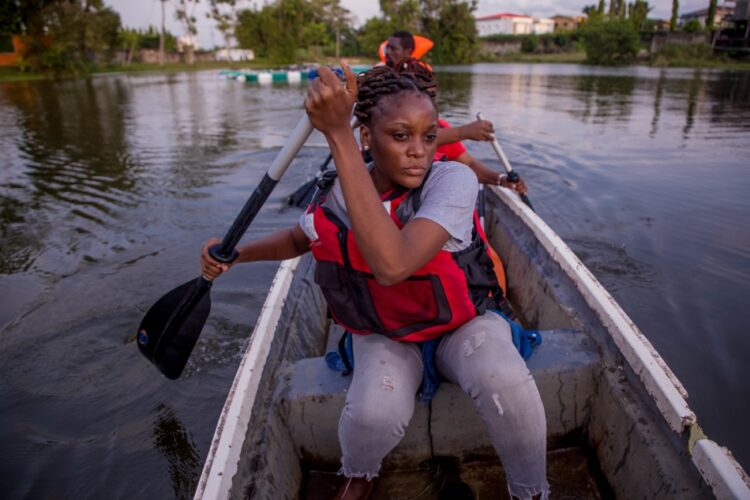Growing the potential of fish farms to increase incomes and secure a nutritious food source
Levedy Céleste Lossangoye developed a passion for fish farming at an early age. She grew up surrounded by fish ponds on her family’s fish farm in Andem in the Central African country of Gabon. Located around 60 kilometres from Libreville, the country’s capital, her family’s farm has 21 ponds across two hectares and has a production capacity of about 37 tonnes a year. It’s enough to make a comfortable living, but there is untapped potential.
Now 30 years old, Céleste is an agricultural engineer with a vision. She is working with her father, Daniel, to turn the family business into a large-scale operation which not only raises tilapia and catfish but also sells their fish directly to people throughout the country. “The farm has enormous potential to meet local demand, despite the many challenges facing the business,” she says.
As in many coastal countries in the Central African region, fish is a popular food source in Gabon. Annual fish consumption is around 35 kilograms per person, one of the highest rates in Africa, but more than 25 000 tonnes of fish have to be imported every year to satisfy the local market.
All the while, aquaculture remains a marginal and underutilized activity in Gabon despite the country struggling to satisfy ever-increasing local demand. Since 2017, FAO has been working with the Government of Gabon to further develop commercial aquaculture by establishing five new fishing centres, both maritime and inland fisheries, and enhancing farmers’ skills to increase production.
Additionally, after conducting research on the needs of fish farmers, FAO conducted training courses in three provinces – Estuaire, Oyem and Bitam – to build the technical capacity, production skills and business know-how of young male and female entrepreneurs including Céleste.
Topics included the selection of fish farming sites, the manufacture and assembly of floating cages, production techniques and improving quality broodstock for tilapia and catfish. “We learnt how to make floating cages, which can add value to what we already have. It’s something we can use to increase our production because we already have ponds,” says Céleste.
“Aquaculture in Gabon is still at an early stage and does not contribute significantly to food security, but the development of aquaculture offers real job opportunities for young people,” says Lionel Kinadjian, FAO fisheries and aquaculture officer. “The demand is there as well as the environmental conditions to promote aquaculture.”
An opportunity for youth employment
Many young graduates are struggling to find a job in Gabon where youth unemployment is running as high as 38 percent, according to the International Labour Organization. FAO believes the fisheries and aquaculture sector offers enormous potential to create jobs, especially for youth, and to meet the challenge of food security and nutrition. “Aquaculture is a profitable activity that allows you to feed your family and provide for your financial needs,” says Céleste. “I urge unemployed people to get involved.”
According to the latest data, there are 423 farmers practising aquaculture and fish farming in Gabon, but only 22.7 percent are under the age of 35.
In addition to aquaculture production, FAO supports this outreach to youth by offering workshops on aquaculture investment and decision making to enhance business plans. It also provided participants with fish farming and harvesting equipment.
Yannick Mve Obiang, a 27-year-old fish farmer who produces catfish and tilapia, says the FAO course gave him skills and insights to modernise his ponds and move from subsistence farming to commercial production. But in Gabon, the sector faces constraints, such as a lack of available fish food or quality fingerlings at an affordable price as well as the absence of investment capital.
“A lack of availability of quality basic inputs makes it difficult for the sector to attract new investors and meet the government’s objectives to double national fish production, reaching 50 000 tonnes by 2025,” says Kinadjian.
“We placed great emphasis on the vision of aquaculture as a business, which should make it possible to ensure the profitability and sustainability of activities and to mobilize finance outside development projects or government donations.”

